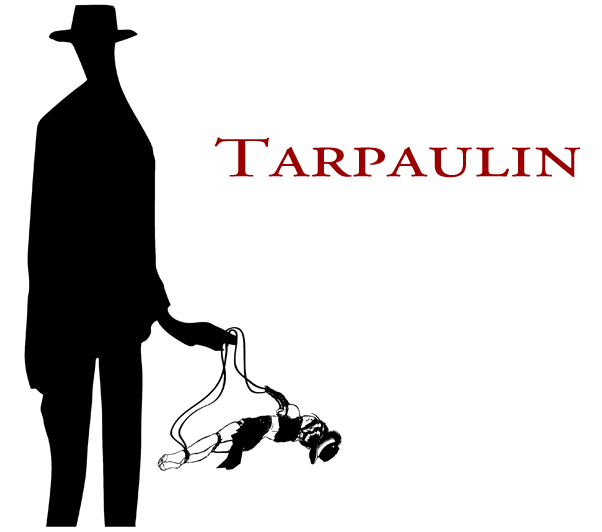 nick-e melville
nick-e melvilleSelections and Dissections
Otoliths
$14.95
Reviewed by Stephen Nelson
One of the great joys of reading poetry for me is that initial encounter with the text where eye meets page and explores the way words have been shaped and arranged on a blank canvas. It's a purely visual experience but somehow impacts upon the way we approach and subsequently read the text. Are we looking at a thick fat block of language to be chewed over like a choice steak, or a long thin stream of words rolling down white space, like a dark burn through a snowy field? Or, is something more unusual, something more intriguing going on? What happens when the poet leaps at the idea of first contact and starts to twist and turn and play with language in order to highlight meaning with visual dexterity or through subtle shifts in the shape and material of language? Well, I suppose we get visual language, or, more specifically, concrete poetry.
nick-e melville has a magician's sleight of hand, or perhaps a musician's love of an instrument he is just about to pick up and blow into for the very first time. Either way he takes us back to first encounters, the joys and risks of play; discovery; games! His book "selections and dissections" has a series of poems entitled "child and adult hood games" which somehow acts as a marker through the collection - the way a kid has a series of familiar haunts he or she will return to from which to head out on new, sometimes dangerous, adventures. A thick rectangular box surrounds a bold block of text naming the kind of games children or predatory adults might play. The games are as serious as your life - Kiss, Cuddle and Torture (with TORTURE looming large); The Strategy of Desire; The Engineering of Consent. The thick band encompasses the text, shutting out the world, forcing us to play the games as obsessively as any child or adult on the hunt, on the prowl, in the zone.
The number of verbo-visual tricks employed in these poem-games is impressive. Visual puns - dips and gaps in text; word play - language repeated, twisted, reversed, turned upside down to create new words; interplay of title and poem - a "celebration" or "cerebration" of language. melville flips the eye, opens the mind, turns us into verbal adventurers discovering the wonders of text, the shades and shapes of meaning in the shades and shapes of language as pagescape. He uncovers the hidden, shadowy regions of text, revealing negative space between line and letter, particularly in the series "alphabits", where the shapes between each letter of the alphabet are explored and given a title which prompts a smile at the absurdity of making substantial that which is generally insubstantial. A similar technique is used in the opening poem, "mid-life crisis", where the eye flickers between the white space of the word "LIFE" and the occult shapes between each letter.
In another series (and how apt that we are led along trails from one poem to another), "homage to I H F", each limb of the letters I H F is moved slightly and recombined to form playful patterns, which, strangely enough, reminded me of the movement of graphics in primitive video games. Again, that first encounter, that brand new experience. The poem of course pays homage to one of the chief movers in the international concrete poetry movement of the 50s and 60s, and it seems totally fitting to me that melville carries the torch of that movement in Scotland and is able indeed to extend the reach and scope of Ian Hamilton Finlay and his peers by adding elements of irony and dark humour.
Elsewhere, melville uses tiny, seemingly insignificant sections of text, the tittle of the letter "i", the dot at the foot of an exclamation mark, and makes poems as delicate and refreshing as summer rain. The "eight rain poems" take those dots and fashion beautiful sky-filled pitter-patterns from a series of words and phrases - "holiday rain", "spring rain", "spitting" - that have the feel of concrete haiku, a Japanese quality reflected in the dedication to Niikuni Seiichi (another traveller from the international concrete poetry movement), and reflect a vein of minimalism running through the book whereby the slightest gesture opens up a world of possibility and meaning. In the poem "mor(t)al dilemma" for instance, the tiny addition of an "s" magnifies the tension between existence and non-existence, experience and non-experience, showing how minimalism can address the biggest concerns with cruel wit and ingenuity.
In other poems, melville zooms in on the substance of the printed word/image, taking us deep into the dark heart of inky matter where we discover a sub-atomic world of splash marks and drips. He plays with the DNA of language, genetically modifying meaning with the tiniest incision or insertion, and explores the inner space of text with a playful precision, leading us beyond the vanishing point.
These poems were made in Scotland, like the bags of cement melville borrows for his three "concrete poems", but his mix of concrete minimalism is a delicious twist on Scotland's encounter with the innovations of international concrete poetry. It investigates that first contact and expands upon it by widening the spaceways between eye and mind. Beyond that, it shows a distinct and unique approach to text which anyone interested in language as a visual event has to experience.




